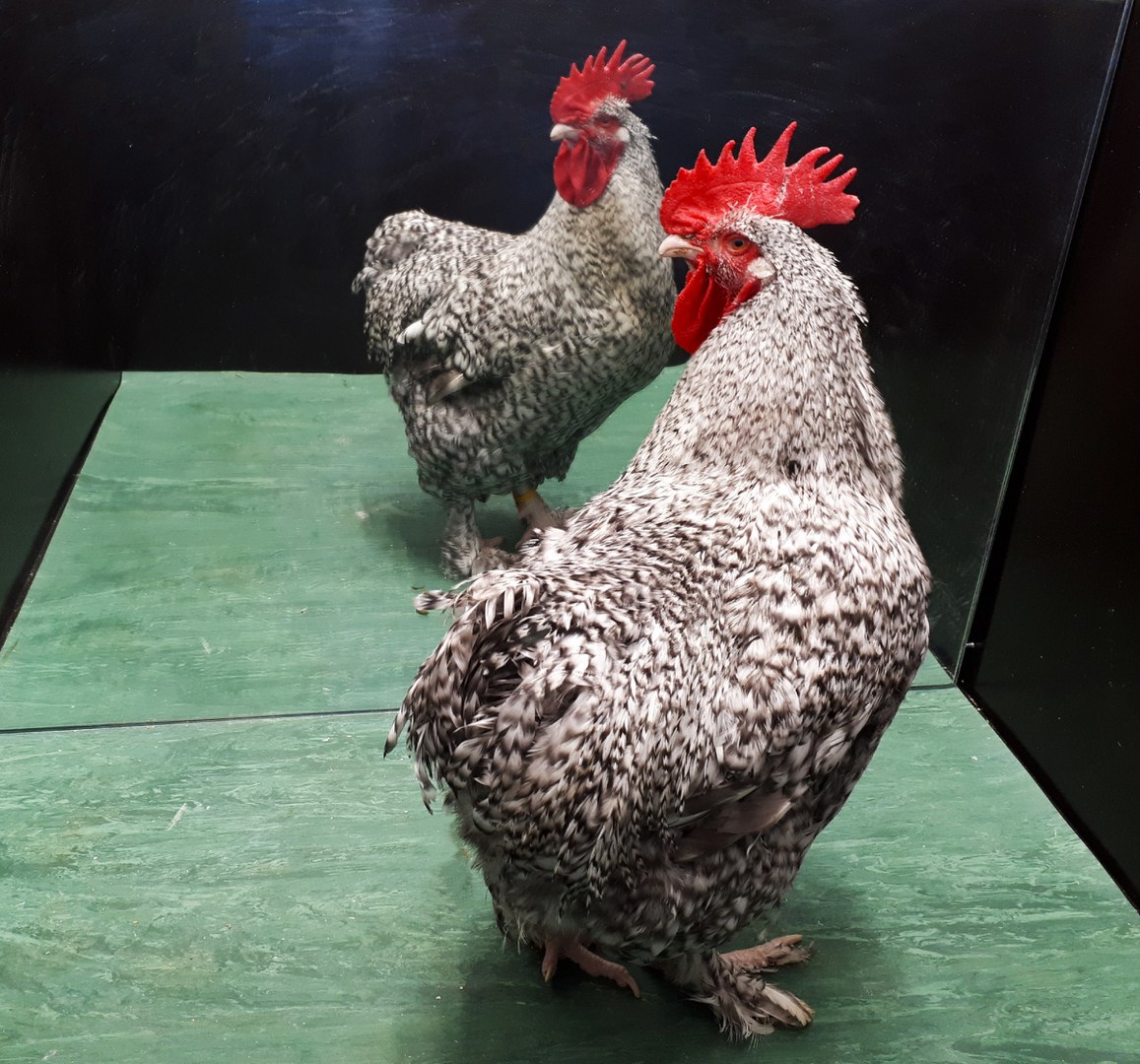“The ability of animals to recognize themselves, and thus to have self-awareness, is a central question in behavioral research,” says doctoral student Sonja Hillemacher, who together with her colleague Dr. Inga Tiemann has spent years at the Institute of Agricultural Engineering at the University of Bonn focused on the scientific study of the behavior of chickens. The idea of experimenting with chickens in front of a mirror came to the researchers as part of discussions with Professor Onur Güntürkün from the Department of Biopsychology at Ruhr University Bochum.
One current test for self-awareness in front of a mirror is known as the ‘mark test.’ A colored marking is applied to the top of an animal’s head, for example, one that the individual can only recognize in front of a mirror. If the animal begins to examine the marked portion of its body in front of the mirror, then this serves as an indication that it has recognized itself in the mirrored image. Yet the test doesn’t always work. Some animals that are considered self-aware don’t pay mirrors any heed. Perhaps because they are disturbed by the ‘artificial’ environment of the experiment?
Adjustment of the experiment to ecologically relevant behavior
“Our goal was to conduct the mirror test in an environment better suited at the ecological level to the behavior of chickens,” says Dr. Inga Tiemann.
Professor Onur Güntürkün came up with the idea of taking advantage of a natural aspect of poultry behavior in the experiment: “Some chickens, and in particular roosters, use special calls to warn their fellow chickens if they see a predator - such as a bird of prey or a fox.” However, if the roosters are alone when they notice the predator, they typically remain quiet so as not to draw the attention of the predator and potentially become prey. “The danger signal is the perfect behavior for an ecologically adapted test of self-identity,” notes the biopsychologist from Ruhr University Bochum.
The research team initially wanted to check whether the roosters would indeed issue the alarm if their fellow chickens were present… and whether they would remain quiet if alone. To do so, the researchers at the University of Bonn built a test arena on the Frankenforst Campus. A fence separated two sections, although both sides were visible to the roosters. A bird of prey was then projected onto the ceiling of one section.
58 roosters took part in the experiment
The researchers tested 58 roosters. To ensure robust statistics for the results, the experiment was repeated three times with each rooster. In total, the roosters issued 77 danger alarms when other chickens were present, but only 17 when they were alone. “Some animals are braver than others,” says Sonja Hillemacher. “The results show, however, that most roosters do in fact warn their fellow chickens when a predator is on the loose.”
For the next step, a mirror was placed between the sections instead of a fence. How do the roosters react to the combination of their own mirror image and a bird of prey? The test was once again conducted three times with each animal. Out of 174 trials, only 25 warnings were issued. “This shows that the roosters do not see their mirror image as a different chicken,” says Sonja Hillemacher. The result offers an indication that they might have recognized themselves in their mirror image. Yet there is theoretically also the possibility that they only recognized an odd animal imitating their own behavior, and for this reason chose not to warn them. “More experimentation is needed here,” explains Inga Tiemann. For comparison purposes, the team also conducted a traditional mark test, in which the roosters did not demonstrate any behavior suggesting that they recognized themselves in the mirror.
The research team sees clear indications in the results that the traditional mirror mark test produces more reliable results when the behavior of the specific animal species is more fully taken into account. “In the traditional situation, our rooster might not have demonstrated any self-awareness,” says Onur Güntürkün. “But when a predator threatens them, it’s clear that its mirror image isn’t another rooster, but rather he himself.” The approach could also be significant for other animal species. Further research on self-awareness in animals and their ability to recognize themselves is also an important foundation for discussions on animal protection and animal welfare, the researchers indicate.





